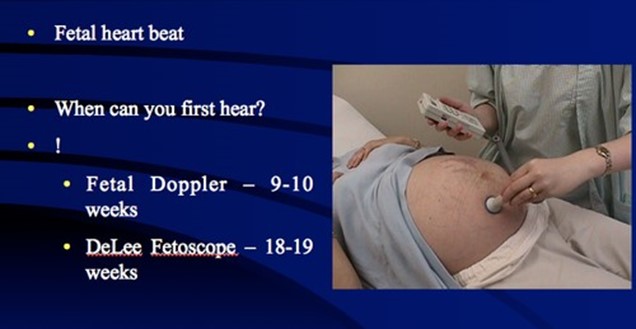A nurse is providing teaching to the parents of a newborn about newborn genetic screening.
Which of the following statements should the nurse include in the teaching?
A nurse will draw blood from your baby’s inner elbow
Your baby will be given 2 ounces of water to drink prior to the test
This test will be repeated when your baby is 2 months old
This test should be performed after your baby is 24 hours old
The Correct Answer is D
The correct answer is choice D. This test should be performed after your baby is 24 hours old. This is because newborn genetic screening is a set of laboratory tests that detect a set of known genetic diseases that can affect a child’s long-term health or survival. The test is performed on a blood sample obtained from a heel prick when the baby is two or three days old. Performing the test after 24 hours ensures that the baby has had enough time to metabolize certain substances that could interfere with the accuracy of the test.
Choice A is wrong because the blood sample is not drawn from the baby’s inner elbow, but from the heel. Choice B is wrong because the baby does not need to drink water prior to the test, as this could dilute the blood sample and affect the results. Choice C is wrong because the test does not need to be repeated when the baby is 2 months old, unless there is a positive or inconclusive result from the first test.
Newborn genetic screening is important for early detection and intervention of certain conditions that can cause serious health problems or disability if left untreated. Parents should be informed about the benefits and limitations of the test, as well as their rights and options regarding consent and confidentiality.
Nursing Test Bank
Naxlex Comprehensive Predictor Exams
Related Questions
Correct Answer is B
Explanation
The correct answer is b. Remove the device from the room.
Choice A rationale:
- Reporting the defect to the equipment maintenance staff is essential,but it's not the immediate priority.The primary concern is to eliminate the safety hazard posed by the frayed cord to prevent potential harm to the client and others.
- Delaying the removal of the device could lead to electrical shock,fire,or other serious consequences.
- Therefore,removing the device from the room takes precedence over reporting the defect.
Choice B rationale:
- Removing the device from the room is the most appropriate first action because it:
- Eliminates the immediate safety hazard.
- Prevents potential harm to the client and others.
- Protects the device from further damage.
- Ensures the safety of the environment.
- Demonstrates the nurse's prioritization of patient safety.
Choice C rationale:
- Initiating a requisition for a replacement CPM device is necessary to ensure the client's continued treatment.
- However,it's not the first action because it doesn't address the immediate safety concern.
- The nurse should first remove the faulty device and then initiate the process for obtaining a replacement.
Choice D rationale:
- Ensuring the device inspection sticker is current is a vital part of equipment maintenance.
- However,it's not relevant to the immediate safety issue of the frayed cord.
- The presence of a current inspection sticker doesn't guarantee the device's safety or functionality at that moment.
- The nurse must prioritize removing the hazard and then follow up with appropriate documentation and reporting.
Correct Answer is A
Explanation

Whether you are a student looking to ace your exams or a practicing nurse seeking to enhance your expertise , our nursing education contents will empower you with the confidence and competence to make a difference in the lives of patients and become a respected leader in the healthcare field.
Visit Naxlex, invest in your future and unlock endless possibilities with our unparalleled nursing education contents today
Report Wrong Answer on the Current Question
Do you disagree with the answer? If yes, what is your expected answer? Explain.
Kindly be descriptive with the issue you are facing.
